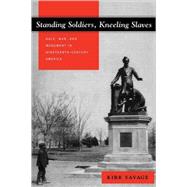
Standing Soldiers, Kneeling Slaves
by Savage, KirkBuy Used
Rent Textbook
Rent Digital
New Textbook
We're Sorry
Sold Out
Summary
Table of Contents
| List of Illustrations | |
| Acknowledgments | |
| Introduction | p. 3 |
| Exposing Slavery | p. 21 |
| Imagining Emancipation | p. 52 |
| Freedom's Memorial | p. 89 |
| Slavery's Memorial | p. 129 |
| Common Soldiers | p. 162 |
| Epilogue | p. 209 |
| Notes | p. 215 |
| Index | p. 259 |
| Table of Contents provided by Blackwell. All Rights Reserved. |
An electronic version of this book is available through VitalSource.
This book is viewable on PC, Mac, iPhone, iPad, iPod Touch, and most smartphones.
By purchasing, you will be able to view this book online, as well as download it, for the chosen number of days.
Digital License
You are licensing a digital product for a set duration. Durations are set forth in the product description, with "Lifetime" typically meaning five (5) years of online access and permanent download to a supported device. All licenses are non-transferable.
More details can be found here.
A downloadable version of this book is available through the eCampus Reader or compatible Adobe readers.
Applications are available on iOS, Android, PC, Mac, and Windows Mobile platforms.
Please view the compatibility matrix prior to purchase.
